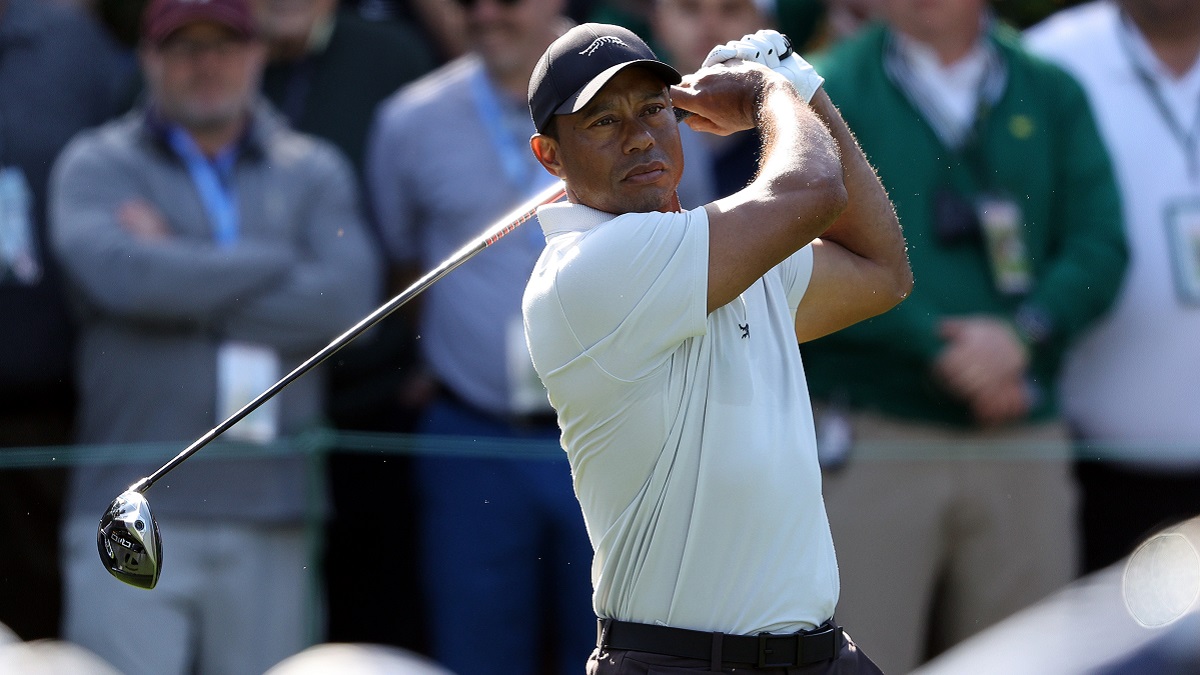Tiger Woods' Masters Odyssey: A Legendary Comeback To Define Golf's Greatest Era
In the world of professional golf, few names evoke the same level of reverence and awe as Tiger Woods. The 15-time major champion's storied career has been marked by countless triumphs, including his iconic victories at the Masters Tournament. For over two decades, Woods has dominated the sport, breaking records and pushing the boundaries of what is possible on the golf course. But it was his 2019 Masters comeback that cemented his legacy as one of the greatest golfers of all time.
The Masters is the most prestigious event in golf, with a rich history dating back to 1934. The tournament is known for its lush greenery, challenging layout, and demanding requirements, making it the ultimate test of skill and endurance for the world's top golfers. For Woods, the Masters held a special significance, as it was his home tournament – the site of his first major victory in 1997, when he won by a record 12 strokes.
However, Woods' most memorable comeback was not his first, but rather his fifth. After a tumultuous period in his personal and professional life, Woods returned to the game in 2018, following a series of surgeries and a tumultuous divorce. His first major of 2019 was the Masters, where he had won eight times before, including five titles in the iconic Par-3 Contest. However, this time around, Woods was not there to make a statement, but rather to define the era.
Woods had a reputation for being invincible, but after a string of injuries and personal struggles, he was no longer the dominant force he once was. His return to the game was a tentative one, with questions surrounding his fitness, focus, and motivation. Yet, as the tournament progressed, Woods began to dispel the doubts, using his experience and guile to outmaneuver his opponents.
The Road to Redemption
For Woods, the 2019 Masters was not just about winning, but about redemption. After years of personal and professional turmoil, Woods had to come to terms with his past and rediscover his love for the game. His journey was not an easy one, but it was a necessary one, as he struggled to regain his confidence and form.
Woods' approach to the game had changed significantly since his heyday. Gone were the days of relying solely on his incredible physical ability; now, he had to adapt to the changing demands of the game. His new approach was marked by a renewed focus on mental toughness, with a particular emphasis on his breathing and mental preparation.
The Anatomy of a Comeback
So, what made Woods' comeback so remarkable? The answer lies in his ability to connect the dots between his past and present. Woods had spent years studying the game, honing his skills, and learning from his mistakes. He had also worked tirelessly to address his physical and mental weaknesses, investing in cutting-edge training and rehabilitation programs.
The Power of Experience
Woods' experience played a significant role in his comeback. With 15 major championships under his belt, he had a deep understanding of the game's rhythms and routines. He knew how to manage his nerves, navigate the pressure, and exploit his opponents' weaknesses.
The Psychology of Victory
For Woods, victory was not just about winning, but about the psychological benefits that came with it. His past victories had been a defining part of his career, and he knew that each one had built his confidence and self-belief.
The Legacy of a Legend
Woods' legacy extends far beyond his impressive resume. He has inspired generations of golfers, including some of the world's top stars. His influence on the game is immeasurable, with many considering him the greatest golfer of all time.
The Impact on Golf
Woods' influence on golf extends beyond his playing career. He has been a driving force in promoting the game, particularly among young players. His charitable foundation, the TGR Foundation, has helped to establish golf programs and facilities in underprivileged communities.
The Turning Point
The turning point in Woods' comeback came on the final day of the Masters, when he began to turn the tables on his opponents. Trailing by one stroke, Woods went on to card a stunning 64, leaving the field in his wake. It was a testament to his mental toughness, focus, and skill, and marked a turning point in his journey towards redemption.
The Moment of Truth
For Woods, the moment of truth came when he sank a 12-foot birdie putt on the 15th hole, a shot that would prove to be the decisive moment in his comeback. The crowd erupted in cheers, and Woods' family, including his wife Elin and children, were overjoyed.
The Emotional Rollercoaster
Woods' emotions during the tournament were a rollercoaster ride of highs and lows. He had struggled with his mental game, doubting his ability to perform under pressure. But, as the tournament progressed, his confidence grew, and he began to overcome his fears and doubts.
The Impact on Golf's Greatest Era
Woods' comeback marked a defining moment in golf's greatest era. The game was at a crossroads, with new talent emerging and old guard fading away. Woods' victory at the Masters was a reminder that the game is about more than just the players; it's about the history, tradition, and values that come with it.
The Enduring Legacy
Woods' legacy extends far beyond his playing career. He has left an indelible mark on the game, one that will be felt for generations to come. His impact on golf is immeasurable, and his influence will continue to shape the game for years to come.
The Changing Face of Golf
Woods' comeback marked a changing
Michael Mando Uality
Brad Pitt Height In Feet
Mamitha Baiju
Article Recommendations
- Tara Reid Husband
- Chloandmatt Fans
- Is Keri Russell Related To Kurt Russell
- Markavis Wife
- Bea Alonzo New Boyfriend
- Andrewtewart Net Worth
- Link
- Glenn Medeiros
- Hisashi Ouchi Pos
- Megyn Kelly Kids



